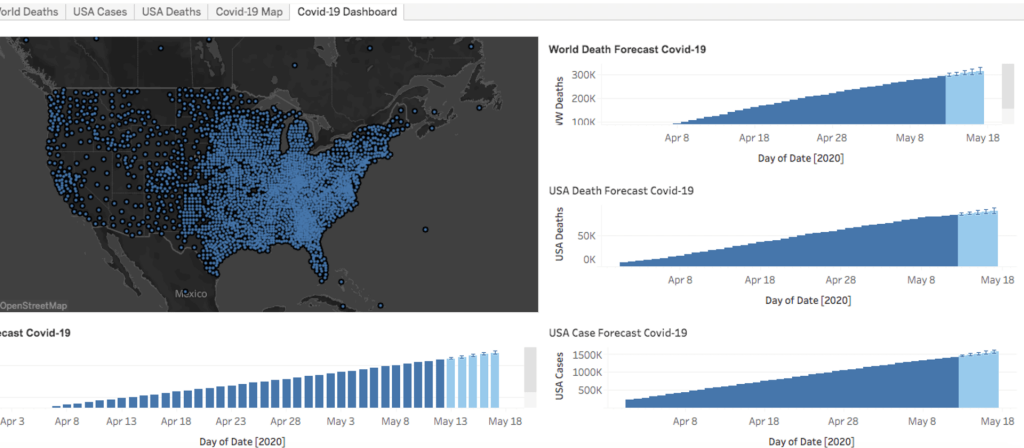–By Diana Hernandez-Alende for FIU News
Organizations around the world have created coronavirus-tracking tools to monitor COVID-19 cases through real-time analytics. An FIU professor, who specializes in theoretical optimization and learning algorithms, and his research team at FIU, have created a dashboard that can predict the number of cases and deaths from COVID-19 using data analytics.

The tool, created by M. Hadi Amini, assistant professor, and his research team, including undergraduate researcher, Meleik Hyman, and doctoral student, Ahmed Imteaj, from the School of Computing and Information Sciences within the College of Engineering & Computing, forecasts the cases of COVID-19 worldwide.
The dashboard allows users to select a specific country or city on a global map. The map shows data reflecting the confirmed number of cases and deaths, and the number of recovered patients.
“I’m fascinated by data and knew we needed to adapt to the new situation we’re all facing,” said Amini. “My students and I were observing the current dashboards available online and how they show real-time data. But, we were looking to design something predictive that could be understandable for everyone.”
The data found in the dashboard predicts daily and is updated frequently using spatiotemporal data collection. Spatiotemporal data collection refers to the process of discovering patterns and knowledge of data that describes a phenomenon in a particular location and period of time. Typical examples include uncovering weather patterns, hurricane prediction and climate change trends. In this case, Amini is using it for COVID-19 patterns.
The team—consisting of Amini and engineering and computing students Meleik Hyman and Ahmed Imteaj from the Sustainability, Optimization & Learning for InterDependent Networks (SOLID) Lab—built the dashboard based on two components: repeating patterns in the historical data and new data from the World Health Organization (WHO).
A statistical model is trained based on existing data for initial prediction. This model predicts future values based on historical data from the last two months. As new data is added, new predictions are made.
“As we move forward, we will have more data and gain more accuracy,” says Amini. Currently, Amini is reaching out to hospitals to make more accurate predictions based on the data he receives.
Amini, Hyman and Imteaj have been invited to the 2020 INFORMS Annual Meeting, taking place in November 2020, to present the data analytics for the COVID-19 prediction dashboard. Amini is also collaborating with Shabnam Rezapour, an enterprise and logistics engineering assistant professor, to present their collaborative work on novel control strategies to mitigate infection propagations in hospitals at the annual meeting.
Amini is the director of the SOLID Lab, where an interdisciplinary research group leverages their solid mathematical backgrounds to develop optimization and machine learning algorithms for engineering applications. He has published more than 90 journal and conference papers, and book chapters.
He is also serving as the Co-PI of a recent RAPID grant from the National Science Foundation on developing novel methods to study community response during pandemics.
Additional reporting by Dominique Kent

